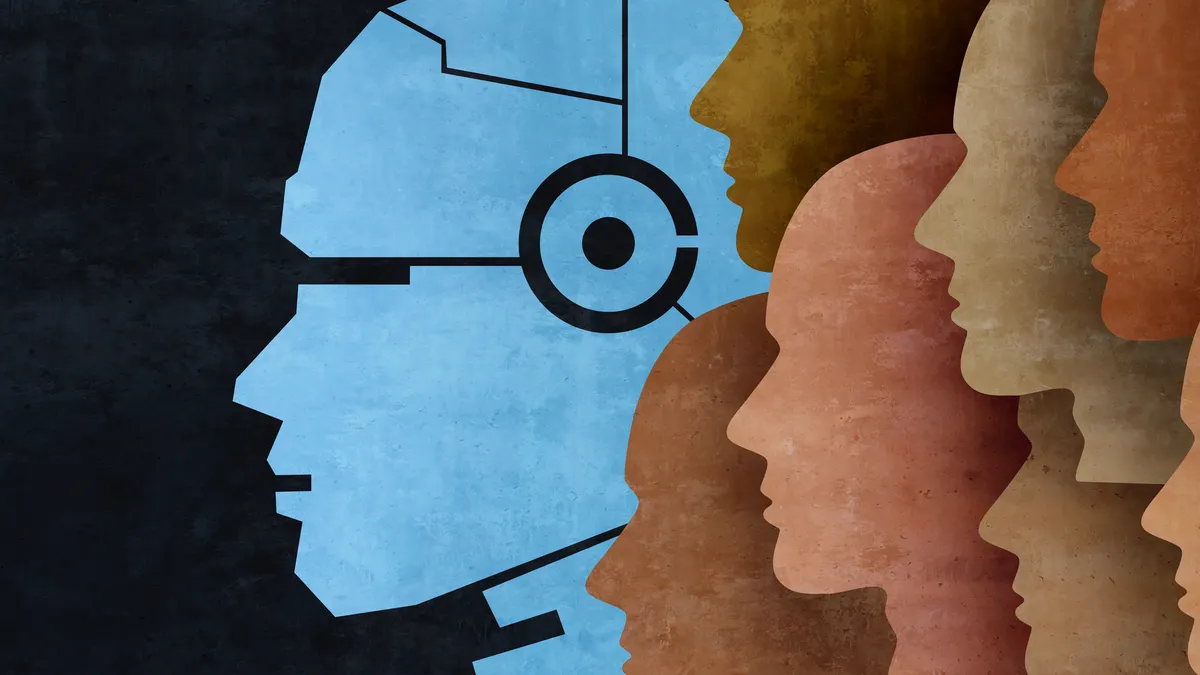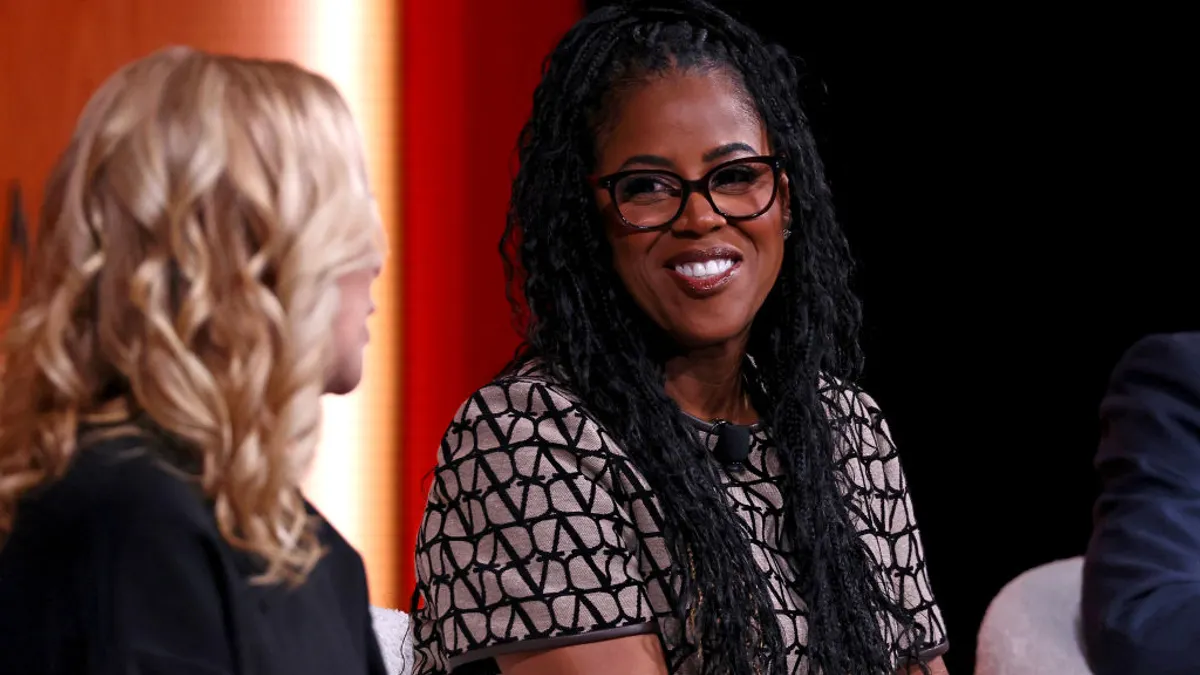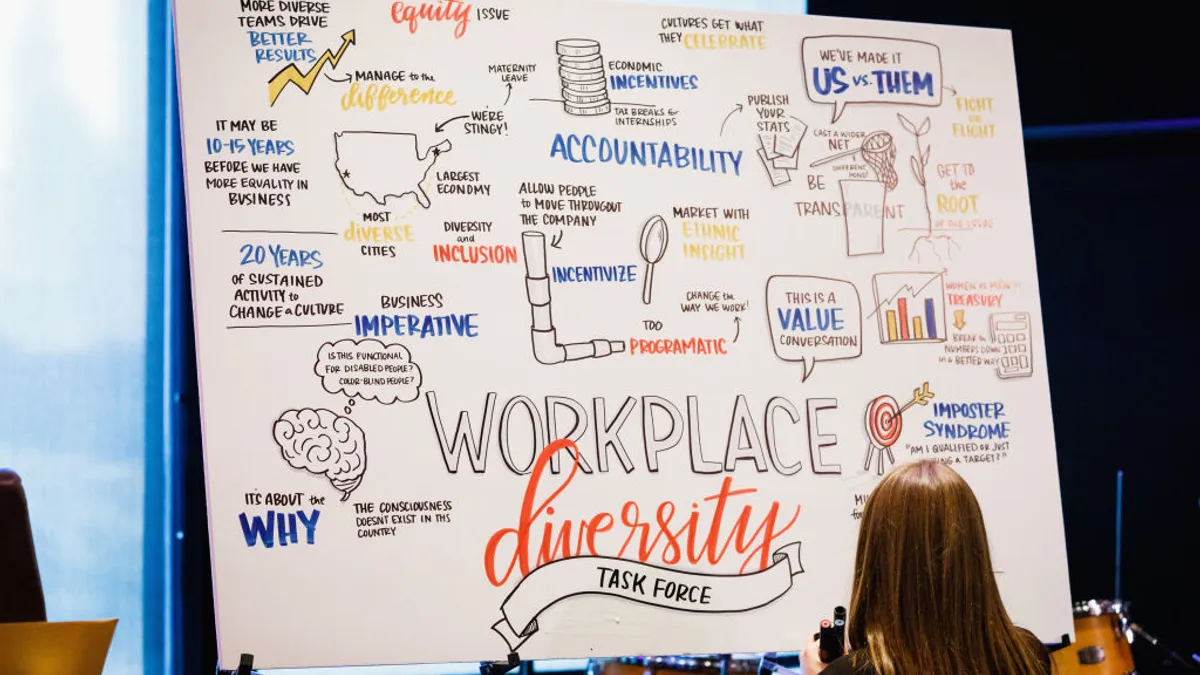LaDavia Drane is global head of inclusion, diversity, and equity at Amazon Web Services. Views are the author’s own.
An effective inclusion, diversity and equity program is not a nice-to-have; it’s good for business.
In fact, a study conducted by Enterprise Strategy Group (ESG) and Amazon Web Services found that 75% of companies with a comprehensive diversity strategy see a positive result on their market share and revenue growth. This is one of the key reasons we remain committed to building ID&E into our culture at AWS.
We need diverse teams to help us think bigger and differently about the products and services we build for our customers from all over the world. But we know we won’t be able to attract and retain diverse talent without prioritizing inclusion. That’s why we lead with inclusion at AWS, and even put “inclusion” before “diversity” and “equity” in our vernacular. Our strategy is designed to move our company beyond good intentions into measurable actions that demonstrate improved workplace culture and deliver positive impact for our customers and communities.
Developing a strategy that can reach underrepresented employees and communities from all over the globe is no easy feat. Each region or country has its own systemic issues and cultural contexts. For example, self-identification to track demographic information like gender and race/ethnic groups isn’t available everywhere. But just because it’s hard, doesn’t mean we back down.
Together with three key stakeholders — employees, leaders and customers — organizations can create a more inclusive global strategy.
Empower employees to be in the driver’s seat
Corporate diversity teams are often lean. To have the greatest global impact, these teams must find ways to broaden their reach and gain an outsized influence. One of the most effective ways to scale ID&E efforts is through involving employees from all regions.
AWS created a program to help foster an inclusive culture by encouraging employees to drive ID&E initiatives within their organizations. More than 13,000 employees have signed up, and they are known as “inclusion ambassadors.” They are not the same as employee resource groups because they don’t promote a particular culture, identity or characteristic. They’re extensions of the ID&E team, and they act as allies, advocates and change agents to speak out on the importance of ID&E and promote relevant programming, trainings and events in their organizations or regions.
An analysis on the impact of this program found that teams with ambassadors reported higher inclusion scores on employee surveys compared to a control group without ambassadors. While we have more work to do, early research tells us that strategic initiatives like this have the potential to drive greater inclusion across the business.
These ambassadors are part of a growing trend and cultural shift of embedding purpose in our everyday work. In fact, half of enterprise employees want to spend more work time pursuing their passions, according to an Adobe survey. Recognizing this trend, we provide microgrants for employees to partner with nonprofits to make a difference for underrepresented communities through our AWS ID&E Innovation Fund. We are seeing strong interest from employees — the number of applications increased 162% from the inaugural year to its second year — and it’s important we continue to empower them to drive change in underrepresented communities.
Unleash leaders’ influence
Although employees are an essential group to amplify a company’s global ID&E strategy, we know progress starts from the top. Leaders play an important role in driving ID&E progress. Inclusive leadership trainings and workshops are a good start, but to truly influence our leaders and win their hearts and minds, we need leaders to fully immerse themselves in the experiences of underrepresented or underserved groups.
Every year, AWS partners with B.A.S.I.C.S. International, a global nonprofit that promotes literacy, economic empowerment and social inclusion, to host a STEAM (science, technology, engineering, the arts and mathematics) summer camp for young students in Ghana. As part of the camp, AWS intentionally invites its leaders across the business to volunteer alongside its global inclusion ambassadors. Executive engagement like this helps unleash cultural change from the top down, providing tangible examples for employees of their leaders’ commitment to ID&E and setting the standard for how an organization interacts with its communities. To the communities that we serve, it shows that employees across all levels are invested in supporting them. And to employees, it shows that leaders genuinely care about ID&E and make time for these initiatives, so it’s not just lip service.
Explore strategic customer partnerships
If you have customers worldwide, it’s time to consider how they can play a role in your ID&E strategy. I’m always amazed at how AWS’s customers use cloud services to build a more inclusive and equitable world. For instance, real estate brokerage firm John L. Scott uses our machine learning tools to identify and strike racially restrictive language in property deeds.
As account teams help customers harness the power of the cloud for good, we look for strategic partnership opportunities with customers to address the needs of underrepresented populations. When we learned that another client, Tarjimly, connects the world’s three billion multilingual speakers to refugees, non-governmental organizations and others in need of translation, we immediately recognized an opportunity to have our bilingual employees volunteer. Now thousands of Amazon employees have volunteered as interpreters for refugees around the world. This partnership shows we can leverage employees’ expertise for the betterment of communities and cultures — and again, it’s work that employees find rewarding.
At the end of day, there isn’t a silver bullet when it comes to advancing ID&E globally for an organization. What’s tried and true is that ID&E practitioners can’t succeed in silos. We must creatively and strategically bring employees, leaders and customers on the journey with us. The power of togetherness will help us reach many more people from underrepresented backgrounds than going at it alone. As the old saying goes, “if you want to go fast, go alone; if you want to go far, go together.”





















